Home Design: How to Get the Look for Less
Check out these 10 home design and decor tips to get the look for less.
Whether you’re planning to update your house before selling, or you want to stay and enjoy the renovations, it is possible to make your house look stylish and modern without breaking the bank.
At Sundae, we’ve created our own time-tested approach to preserving character in the homes we renovate and redesign. Along the way we’ve learned a few things about how to do it in the most cost-effective manner. Here we share 10 great tips for how to remodel (and decorate) like a pro without spending like a rich one.
Tip 1: Turn to the experts (free of charge)
Before diving in, spend some time online researching design inspiration and ideas to hone in on the stylistic direction of your project. This list of sites is a great starting point for finding trendy and budget-friendly examples of home improvement projects.
2: Organize your thoughts
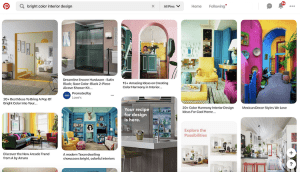
The amount of inspiration on the web can be overwhelming. Utilizing free tools like Pinterest and Houzz to organize your favorite products and images are game changers!
Not only are these sites great sources of inspiration, but being able to save all of your ideas in one place and edit as needed is key in creating a cohesive design on your own. It also saves money by preventing costly purchase mistakes. At Sundae we always begin our design process by curating online inspiration boards well before we even swing a hammer.
Tip 3: Shop around
When you find a fixture or furnishing you like, it’s an absolute must to comparison shop to see if you can find it at a lower price. Internet extensions like Honey and Rakuten can be great sources for hidden coupons and savings. Even better, try to find something with a similar look, but at a lower price point. You might be surprised by how much you can save without sacrificing quality or style.
Build.com, Wayfair, IKEA, Home Depot, Etsy, and Amazon are some reliable retailers to keep in mind. Try searching on Google with a description of the item you’re looking for (“bronze drawer handle”) to see what comes up. Below are some examples of budget friendly yet stylish products we’ve recently incorporated into projects at Sundae.
Example 1: Brizo Kitchen Faucet for $511 vs. Kraus Kitchen Faucet for $145
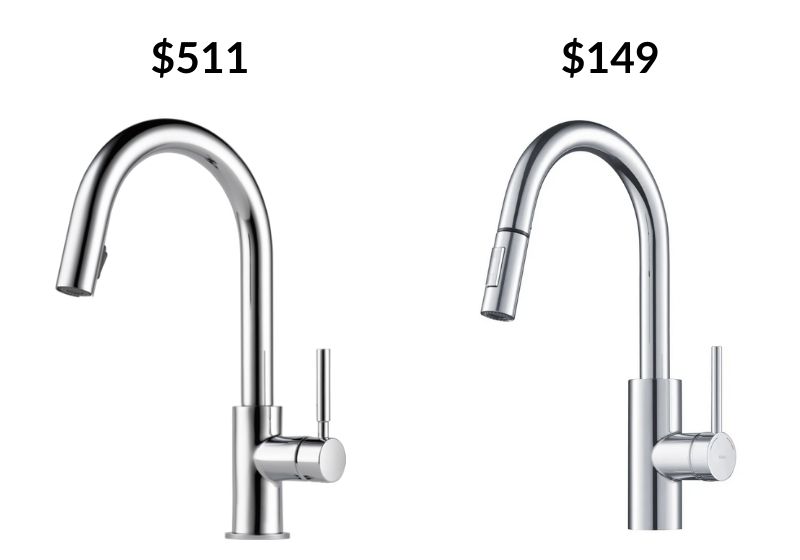
Example 2: Goodman Hanging Light for $869 vs. Savoy House Pendant Light for $258
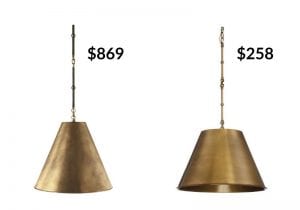
Example 3: Patterned Cement Tile for $14.40/Sq. Ft. vs. Patterned Durabody Ceramic Tile for $1.58/Sq. Ft.

Example 4: Keystone Medium Chandelier for $869 vs. Elegant Lighting Candle Chandelier for $232
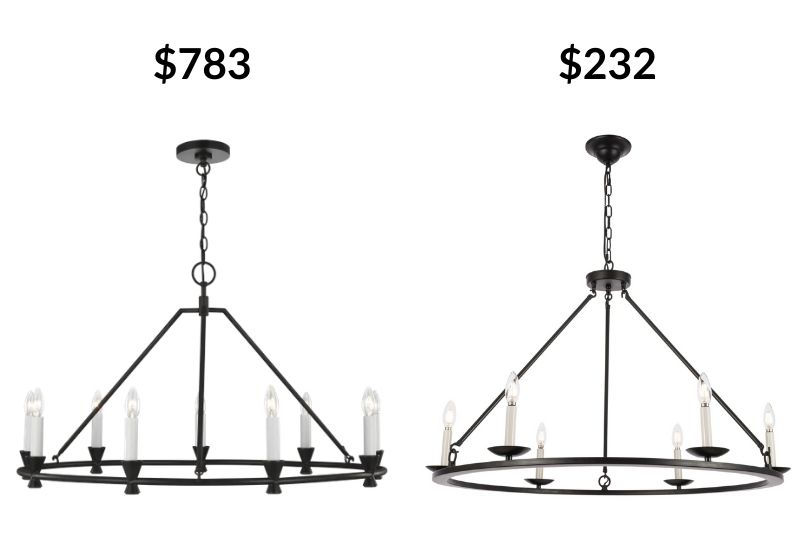
Tip 4: Get creative with inexpensive materials
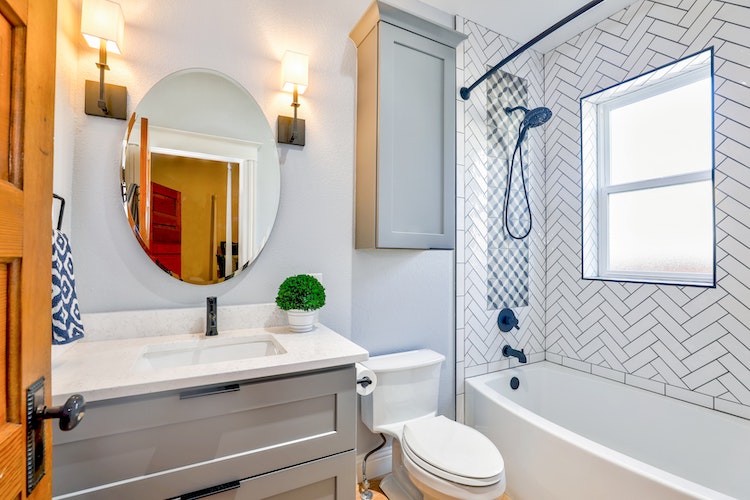
A fun design hack is using inexpensive material but installing it in a unique way to create a more stylish look. For example, there are many different ways to install a classic subway tile that will add interest to your remodel at a minimal cost.
Another design feature that costs less than you may think is shiplap. Adding shiplap to a fireplace or accent wall adds a lot of texture and an interesting look that smooth drywall can’t achieve. For less than $2 per square foot, shiplap is a great material to incorporate into your remodel and one that buyers will gravitating toward.
Tip 5: Keep it simple
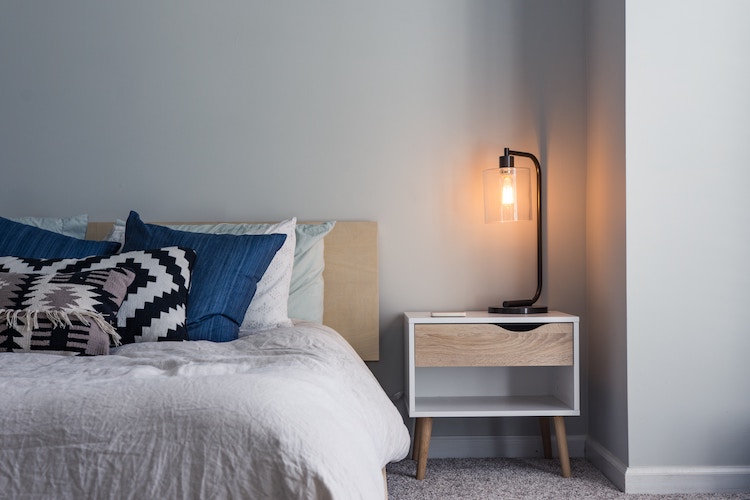
Focus on simple designs that will stand the test of time. Supplement a classic palette with furnishings that incorporate personal touches and color flourishes. During renovations, when in doubt keep your hard selections such as tile, flooring, and cabinetry neutral. Simple selections will be less expensive and are less likely to be changed by future homebuyers, thus making your home more appealing and move-in-ready should you decide to sell.
Tip 6: Measure first!
It sounds rather obvious, but when you are purchasing new furniture or light fixtures take the time to measure your space first. Having furniture that is too big or too small for your home can really hinder the look and functionality of the space. Similarly a dining chandelier that is too small can get lost in the room. Having these dimensions will not only help you narrow down selections but save you time and money on returns and exchanges. Magicplan is a great free app for this.
Read more: Home Renovations With the Highest ROI
Tip 7: Hit the second-hand circuit
Garage and estate sales offer big savings on one-of-a-kind items. Second-hand and thrift stores are also worth a look. Don’t forget online auctions such as eBay and Bonanza. Try searching online for home improvement auctions and liquidators. If possible, be on the lookout for sample sales, where retailers unload excess merchandise for bargain basement prices.
Tip 8: Make a good first impression

Perhaps the most impactful thing you can do to improve the overall look of your home is freshen up the exterior. This can be done for relatively cheap, and will be the first thing every visitor (and potential buyer) to your house will see when they pull up at the curb.
Consider a classic colored paint and a modernized handle for the front door. Think about the other surrounding details, too. Landscaping and lighting can make the space more inviting. If you’re buying plants, buy younger, smaller-sized plants. They’ll cost less and eventually grow much bigger.
Your entryway is likely not a place where anyone will spend a lot of time, so no need to go overboard with creature comforts. It’s also a small area, which means lower costs to upgrade. Remember, the key here is creating a welcoming appearance.
Favorite front door colors at the moment: Behr Midnight Blue N480-7 and Behr Broadway PPU18-20
Tip 9: Clean and paint
Before you spend a dime on remodeling, consider a deep clean of your house and any rooms you’re looking to upgrade. This includes the exterior. It’s remarkable how big of a difference a thorough cleaning can make, and for only a few hundred bucks.
Once this is done, remember cleaning’s best friend in budget renovations: a fresh coat of paint. Again, for only a few hundred dollars, painting makes rooms look like new. Play with color by accenting doors and ceilings, but try to stay neutral to keep costs down.
Read more: Affordable Alternatives to Renovating
Tip 10: Hire an interior designer
This may sound counterintuitive, but consulting a good interior designer can save you a lot of money. According to HomeGuide, the average hourly cost of an interior designer runs between $50 and $200. When looking at your budget as a whole, interior designer’s fees are often the smallest cost with the biggest impact. The touch of a professional can help ensure all your selections are cohesive and may help you avoid bad decisions in the long run. Before going this route, be sure to do your research to find someone whose style you’d like to emulate. Schedule a few consultations to figure out who is the best fit for you and your project.
Ready to Get Started?
Sell as-is. Pay zero fees to Sundae. Move on your time. No repairs, cleanings, or showings.
